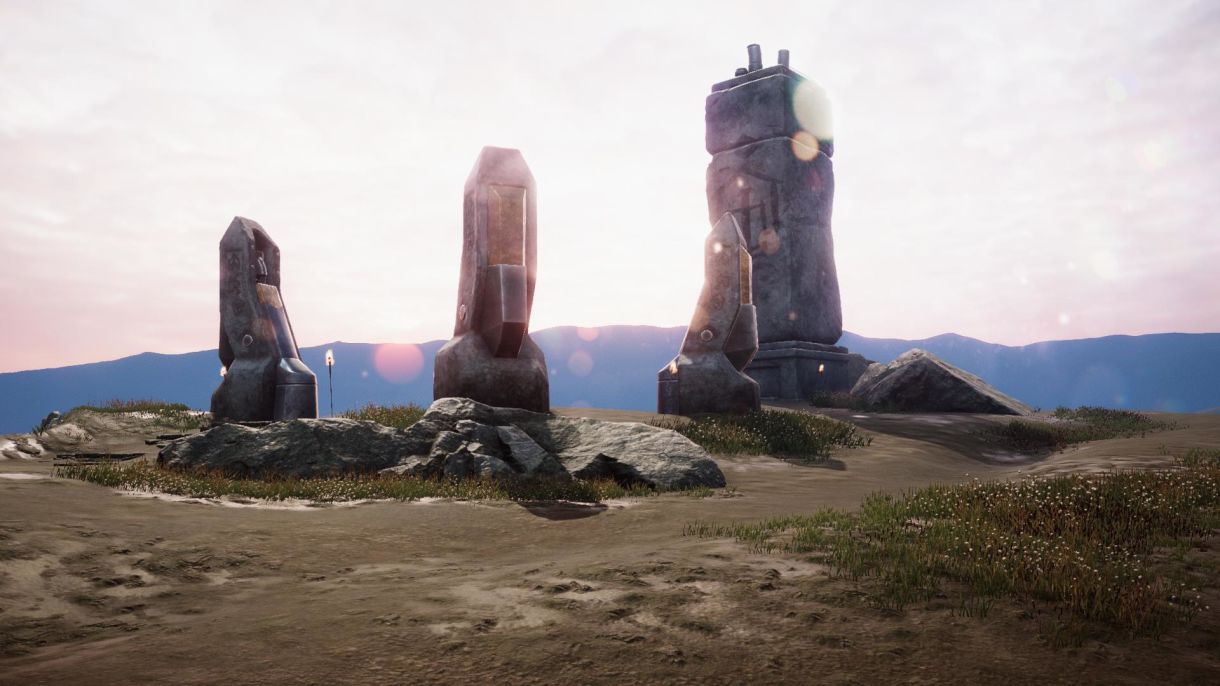Lorenzo Dominguez showed how he builds some interesting environments with Unity.
Introduction
My name is Lorenzo Dominguez, I am currently working as a unity developer at ARTECH (France), developing augmented reality experiences mostly for advertising. During my college time studying Computer Science I discover the amazing world of the 3d art design and since then( at least 8 years now )I been studying and developing my art skills mostly on my free-time doing personal projects or freelance work. I’m a developer but my dream job is to work as a game artist in a professional game studio someday.
When Unity announce the “Neon Challenge”, I saw the opportunity to challenge myself and put in practice some of the skills that I have learned into a single project. I start selecting some of the provided concept art and then I add my own twist.
Once I was happy with the environment concept, I start the level block-out and some test on Unity to check the look and feel of the environment size proportions.
I gathered a lot of references, also I drew some sketches to help me understand how the shack part will fit.
I do all the base modeling in 3ds Max, them some high-details in Zbrush, back to Max for retopology + uvw mapping, finally all the texture work in substance painter, this time I take advantage of the new materials on the substance source, as a pretty good base from where I start to make some modifications.
I end up with almost 160GB of video capture of the modeling/ texture process; I will continue releasing those videos on my YouTube channel LD3D. Every time I find some time to edit.
Assets
Thanks to the scene concept art, I had a clear idea of what I wanted to achieve, so I start searching for the AssetStore some game props that could fit into my project. Mostly from the free unity demo projects, they have many good assets in there that you can use, saving some production time that could be spent on other tasks.
Here some camera shots where you can see the source of origin of the assets and the final distribution on the scene: free assets (Green), paid assets (Red), made by me (Blue)).
If you are using Unity I strongly recommend to check the Asset Store, every day publishers upload good quality content. I know that we all have tight budgets or none, but most of the time you would find real time-saving products. Always check the product reviews and the feedback of the community before buy, if you can’t afford it at that moment hit the like button and add it to your wish list and wait for the unity sales maybe you can get it for the half-price.
Lighting & Post-production
The lightning and post-production process was pretty straightforward. Unity by default is like a blank canvas, you need to setup some components and tools, but once you manage to easily configure it you can achieve visually almost anything that you aiming for. I set the Unity Project ColorSpace to Linear and the Rendering Path to Deferred.
For the Post-production Effects, I use the post-processing stack v2, at that moment was in beta you can download it from the unity GitHub page. I tried to match witcher3’s color palette. I do not know if I approached, but I’m happy with the overall look and feel.
For the Lightning configuration a use Unity’s Precomputed Real-time GI, this system (Enlighten) calculate the bounce of light around the static geometry within a Scene in the Unity Editor and store this data for use at runtime. This process reduces the number of lighting calculations that must be performed at runtime, allowing real-time bounced lighting while maintaining interactive frame rates.
Some optimization must be performed to reduce the calculation time, I recommend the “Introduction to Precomputed Realtime GI” article from the Unity blog if you want to know more.
Visual effects
In the background story that I created for the environment, I mentioned that the abandoned building was made by the “ancients”, a lost culture that had incredible science achievements, so I change the initial concept (surveillance tower) and made the pillars with the idea of enrich the final sequence with something like a channeling of pure energy.
For the energy streams, I used some assets from the “Realistic Effect Pack4” by kripto289, with some personal modifications to achieve the final result.
I used “iTween” to create a noise movement for the sphere by code, this free tool is a powerful and easy to use animation system for Unity.
For the texture material animation, I use the RDSystem made by “Keijiro” for Unity, you can check it here. I modified the system to start the reaction-diffusion animation when I need it.
Finally, all the components were animated in “Timeline”
Tips
The main challenges for me where to make an open environment scene, also to learn some of the new great Unity tools that I had not had a chance to try before like (Cinemachine, Timeline, Post-ProcessingStackV2), This was my first complete environment scene and I’m happy with what I achieved in the limited time of the contest.
Some advice for this great community would be:
-Be smart and honest about your planning.
-Be aware of your strong skills, but most important of your weak ones, those are probably the ones that are going to drag your production time down.
-Don’t underestimate a task that you have never done before for simple it may seem.
-Don’t be afraid of trying some new techniques (modeling, texturing, shader, vfx) and always stay on schedule.
– Don’t wait to finish, ask for feedback (Expert or not). Fresh eyes could give you a new interesting point of view.

